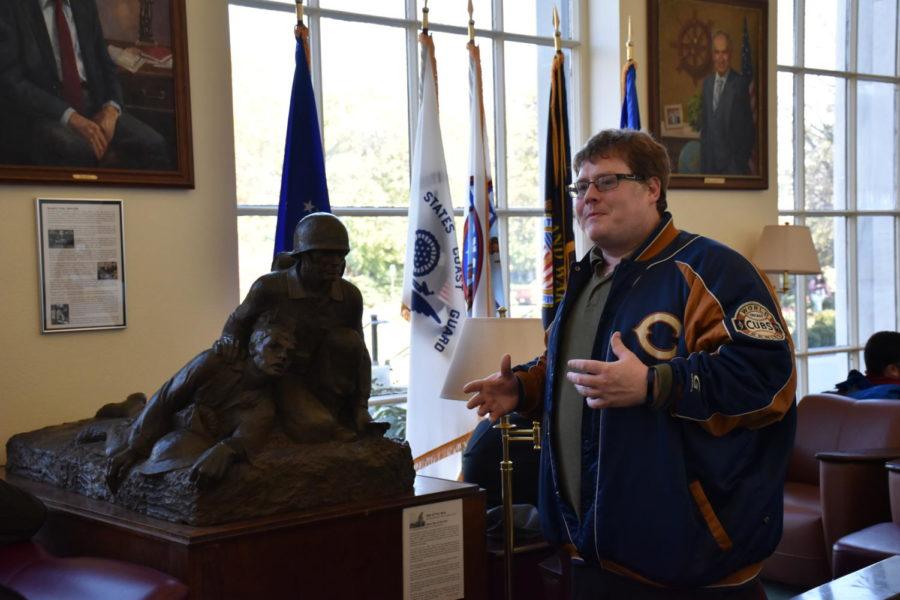Art walk commemorates sacrifices of Iowa State soldiers
November 8, 2017
This year marks the 100th anniversary of the United States’ entry into World War I. In the 100 years since then, over 650,000 American lives have been lost in wars across the globe. University Museums’ monthly art walk examined sculptures honoring the sacrifice of Iowa State soldiers killed in wars across those 100 years.
Most of the works of art were created by Christian Petersen, an artist in residence at Iowa State during the Great Depression who worked at Iowa State until his retirement in 1955.
Over the course of Petersen’s career, he witnessed the impacts of war on students and the campus community. Though Petersen was a pacifist, he sculpted these works to honor and commemorate the sacrifices of students during World War I and World War II.
“[Petersen] believed one drop of blood shed in war was too much, but he wanted to honor those students who didn’t come back,” said David Faux, the interpretations specialist for University Museums. “He wanted to bring forward the stories of those students who were putting away their studies to become soldiers.”
The walk began in the Pride Veterans’ Lounge in the Memorial Union, where “Men of Two Wars” depicts the seemingly endless worldwide conflicts in the early 20th century. The sculpture, created in 1942, depicts two soldiers representing both world wars struggling across the battlefield. The World War I doughboy appears spent, exhausted and on the verge of death, while the World War II GI has a grim, determined countenance.
Not all of Petersen’s works received appreciation from the public. “The Price of Victory,” created in 1944, depicts a fatally wounded solider taking his final steps before collapsing to the ground.
“The enormity of that sacrifice was so hard to fathom, and Christian wanted to extricate that for his sculpture,” Faux said.
The sculpture was created around the time of the D-Day invasion of Europe, and was placed in Gold Star Hall in the Memorial Union. The student reaction to the work was immediate, but the student body did not receive the sculpture in the way Petersen anticipated.
“They would see this sculpture and see their fathers, their brothers or those who had already died, and they would break down,” Faux said.
While the university asked Petersen to take the sculpture down, he considered it a great honor that his work evoked such an intense reaction from those who saw it. During the Vietnam War, students requested that “The Price of Victory” be brought out and displayed.
The Memorial Union houses these works of art, but the building itself was created as a memorial for those killed in World War I, and was funded by students, with each person donating $1,000 to supplement the cost. Gold Star Hall contains names of Iowa State students who gave their lives in conflicts ranging from World War I to the wars on terror in Iraq and Afghanistan.
The names inscribed for conflicts after World War I are much smaller because the students believed that such a large conflict would never happen again.
“There’s so many more names and so little space to put them,” Faux said.
“Conversations,” located in front of Oak-Elm Hall, was both the final stop on the art walk and Petersen’s final work on the Iowa State campus. The Conversation’s sculpture was intended to have six different figures and an amphitheater, but Petersen’s health failed before he could complete it.
“Conversations” contains three separate groups of figures: a group of young women studying, a couple reading a book and a solitary woman sitting alone with a rose in her lap.
“Christian had the idea of depicting what is lost when the young are called to war,” Faux said. Faux encouraged the visitors to create their own narratives based on the sculpture, and warned them not to doubt their own interpretations once they learned of Petersen’s vision.
“Don’t think that what you’re seeing has any less value than what the artists intended,” Faux said.







